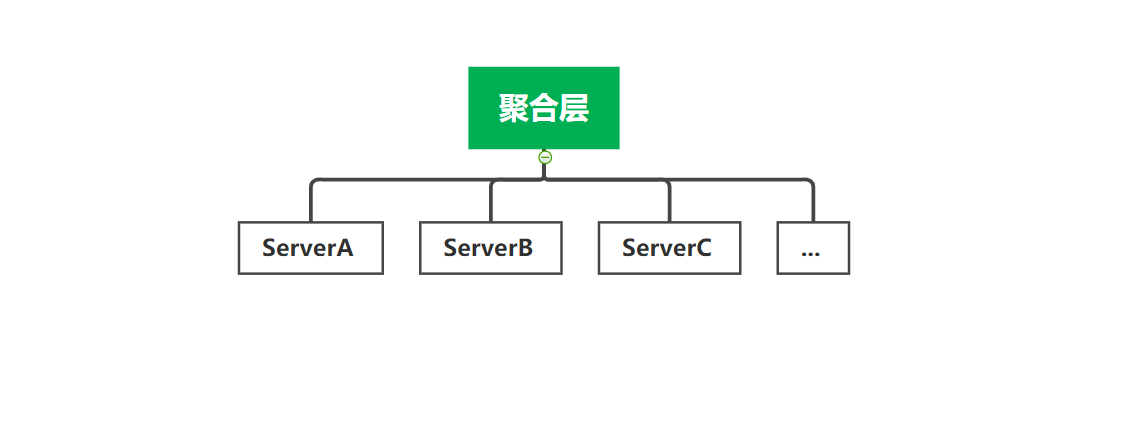标签:roc file ash 分解 后台 使用 element option login
在前后台分离开发模式大行其道的今天,前端也形成了自己的一套工程体系,随着业务的不同,前端也诞生了很多相应的解决方案,那么我们在开发初期因该如何选择呢,我们来回顾常用应用有哪些。(本文只是自己得理解,
有理解错得地方希望老鸟帮忙指点一二)
SPA,单页面应用
单页面应用做为各种解决方案得基础,不得不说得力于webpack大行其道,webpack通过入口将所有彼此依赖得文件打成一个网,最终输出到磁盘中,index.html只关心最终输出文件,当然这里涉及到更核心得概念就是模块化编程,
比如amd,cmd,commonjs,es module等等这里就做阐述了。作为一个前端,我们很容易可以创建一个单页面应用。然而随着一个项目需求变得越来越多,项目体积变得越来越大得时候,单页面应用得弊端也渐渐得暴漏出来,
最大直观问题就是文件加载过大导致页面性能下降,到这里你会说,我可以做按需加载,可以uglify,可以tree shaking,可以提取公共文件等等,当然这些都是解决方案,那么如何可以更好得解决这个问题,是不是可以从业务上
进行拆分呢,各个模块单独使用各自得html呢,于是有了MPA(多页面应用)
MPA,多页面应用
通过webpack控制入口文件,打包出来多个最终文件同时提供多个html,可以实现模块之间项目独立从而达到解耦得目的,达到了我们得目的,但是也随之带来了一些弊端,MPA路由基于文档跳转,每一次跳转带来得负担就是需要重新加载
公共资源文件,性能上对比SPA大大降低,切合到实际开发中当项目太大多个部门共同开发时,所有人共同开发一个独立工程,一旦一个模块代码出现问题会影响到整个前端工程,线上发布同样会遇到同样得问题,一个模块会影响整个工程。
如何避免呢,答案就是微前端解决方案,那么什么是微前端设计方案呢
MicroFrontend,微前端
个人对于微前端的理解是基于对微服务的理解
微服务将单体服务拆分成多个服务如图

多个服务相互独立,通过聚合层对外暴露公共端口,每个服务实现独立部署,那么前端是不是也可以这么做呢,于是微前端就诞生了
微前端架构解决了哪些SPA与MPA解决不了的问题呢?
1)对前端拆分解决了MPA的资源重新加载的问题
2)解决了SPA体积过大的问题
3)解决开发过程中各个模块相互影响的问题,达到了模块独立开发。
整体结构如图

那么如何创建一个微前端的应用呢
我们用两种方式实现,(核心思想都是single-spa)什么是single-spa自己查吧
1)html嵌套
核心:single-spa,htmlEntry
注册中心
import * as singleSpa from "single-spa"; import GlobalInstance from "./globalInstance"; import config from "./conf"; import { importEntry } from "import-html-entry"; var globalInstance = new GlobalInstance(); var registeredModule = []; async function register(name, storeUrl, moduleUrl, path) { if (registeredModule.includes(name)) return; registeredModule.push(name); let storeModule = {}, customProps = { globalInstance: globalInstance }; // storeModule = await SystemJS.import(storeUrl); if (storeModule && globalInstance) { customProps.store = storeModule; // globalInstance.registerStore(storeModule); } singleSpa.registerApplication( name, () => { // return SystemJS.import(moduleUrl); return loadApp(moduleUrl); }, () => { return location.pathname === path; }, customProps ); } async function loadApp(htmlPath) { const { template, execScripts, assetPublicPath } = await importEntry( htmlPath ); const global = window; const appContent = template; let element = createElement(appContent); const execScriptsRes = await execScripts(global); var root = document.getElementById("root"); root.appendChild(element); var appInstanceId = "test" + new Date().getTime(); return { name: appInstanceId, bootstrap: execScriptsRes.bootstrap, mount: execScriptsRes.mount, unmount: execScriptsRes.unmount }; } function createElement(htmlElement) { var container = document.createElement("div"); container.innerHTML = htmlElement; return container; } config.forEach(c => { register(c.name, c.storeUrl, c.moduleUrl, c.path); }); singleSpa.start();
这里加载应用利用的是html嵌套
子应用需要暴露三个钩子函数
bootstrap,mount,unmount
import singleSpaReact from ‘single-spa-react‘; import RootComponent from ‘./component/root.component‘; const reactLifecycles = singleSpaReact({ React, ReactDOM, rootComponent: RootComponent, domElementGetter: () => document.getElementById(‘blog-root‘) }) export const bootstrap = [ reactLifecycles.bootstrap, ] export const mount = [ reactLifecycles.mount, ] export const unmount = [ reactLifecycles.unmount, ]
打包时候,针对出口配置如下
output: { path: path.resolve(__dirname, "./dist/"), filename: ‘[name]-[chunkhash].js‘, libraryTarget: "umd", library: "blog", },
这里要注意打包输出采用umd形式以保证importEntry可以正确加载到
2)js动态加载
核心single-spa,systemjs
import * as singleSpa from "single-spa"; // import appJson from "./appConf/importmap.json"; import confs from "./appConf/importConf.js"; function loadApp(url) { return System.import(url) .then(module => { console.log(module); return module.default; }) .then(manifest => { const { entrypoints, publicPath } = manifest; const assets = entrypoints["app"].assets; return System.import(publicPath + assets[0]) }); } confs.forEach(conf => { register(conf); }); function register(target) { singleSpa.registerApplication( target.name, () => { return loadApp(target.url); }, () => { return location.pathname === target.path; } ); } singleSpa.start();
子应用同样必须暴漏三个钩子函数
bootstrap,mount,unmount
import React from ‘react‘ import ReactDOM from ‘react-dom‘ import singleSpaReact from ‘single-spa-react‘ import RootComponent from ‘./root.component‘ const reactLifecycles = singleSpaReact({ React, ReactDOM, rootComponent: RootComponent // domElementGetter: () => document.getElementById(‘common-root‘) }) export const bootstrap = [ reactLifecycles.bootstrap, ] export const mount = [ reactLifecycles.mount, ] export const unmount = [ reactLifecycles.unmount, ]
该种方式利用system进行加载目标应用
整个工程核心思想就这些,但是在实现过程中,我们如何正确加载到子应用
路由匹配子应用时候如何解决跨域问题
方案1
跳过跨域问题,由server解决路由问题
const express = require(‘express‘); const path = require(‘path‘); const { createProxyMiddleware } = require(‘http-proxy-middleware‘); const port = process.env.PORT || 3001; const app = express(); app.use(express.static(__dirname)) app.get(‘/blog‘, function (request, response) { response.sendFile(path.resolve(__dirname, ‘index.html‘)) }) app.get(‘/login‘, function (request, response) { response.sendFile(path.resolve(__dirname, ‘index.html‘)) }) var currentModule = ‘‘; const getTargetServer = function (req) { var conf; switch (req.path) { case ‘/common_module‘: currentModule = ‘common_module‘; conf = { protocol: ‘http‘, host: ‘localhost‘, port: 3002 }; break; case ‘/blog_module‘: currentModule = ‘blog_module‘; conf = { protocol: ‘http‘, host: ‘localhost‘, port: 3003 }; break;case ‘/login_module‘: currentModule = ‘login_module‘; conf = { protocol: ‘http‘, host: ‘localhost‘, port: 3005 }; break;default: switch (currentModule) { case ‘common_module‘: conf = { protocol: ‘http‘, host: ‘localhost‘, port: 3002 }; break; case ‘blog_module‘: conf = { protocol: ‘http‘, host: ‘localhost‘, port: 3003 }; break;case ‘login_module‘: conf = { protocol: ‘http‘, host: ‘localhost‘, port: 3005 }; break; case ‘vedio_module‘: } break; } return conf; } const options = { target: ‘http://localhost:3002‘, changeOrigin: true, pathRewrite: { ‘/common_module‘: ‘/‘, ‘/blog_module‘: ‘/‘,‘/login_module‘: ‘/‘, }, router: function (req) { return getTargetServer(req); } } const filter = function (pathname, req) { var result; result = (pathname.match(‘/common_module‘) || pathname.match(‘/blog_module‘) || pathname.match(‘/login_module‘) || pathname.match(‘/*.css‘) || pathname.match(‘/*.js‘)) && req.method === ‘GET‘; return result; } app.use(createProxyMiddleware(filter, options)); app.listen(port, function () { console.log("server started on port " + port) })
方案2
前台通过cors解决跨域问题
headers: {
"Access-Control-Allow-Origin": "*"
}
以上就是微前端的基本知识点,之后会不停更新。
标签:roc file ash 分解 后台 使用 element option login
原文地址:https://www.cnblogs.com/moran1992/p/14166056.html